If you look at the weeks and months ahead in your selected marathon or half marathon training plan, you will see weekly mileage totals and distance runs become greater and longer. It can be intimidating to look at the mileage and increased workload. Maybe you think to yourself, “How will I ever be able to go that far or run that much?” You can and you will but first, you need to define your goals, and second, be persistent. Being able to run for two or three or more hours is not easy, but can be accomplished with persistence, patience, and maybe a little understanding of the physiology behind it all. After all, the purpose of your training is to become more efficient and be able to sustain a greater workload every week.
A good place to start is to consider a goal time. Consider past races and recent training levels, you will certainly gain fitness in the months ahead, but also be realistic. If you have done any recent 5k’s or 10k’s those are great estimates of your current fitness level. You can use past race results to help estimate or decide what pace to train for your selected distance. I recommend doing a quick Google search for a training pace calculator. You can plug in various paces, races, and goals and it will give you estimates of current fitness and predictions for upcoming races. This will also be very helpful for selecting paces for your workouts.
Your training plan will be broken down into different categories, telling you not just mileage for the day and week, but also how to differentiate your training runs. Current research and advice recommend the 80/20 rule, 80% of your training should be done at a low intensity or easy aerobic pace, 20% of training should be at a hard or faster pace, which will be more anaerobic and maybe about 75-80% of your maximum heart rate. You read that correctly, about 80% of your training should be run easy. That is correct E-A-S-Y, which means you should be able to run at a pace that enables you to carry on a conversation. The benefit of doing the majority of your mileage at an easy, aerobic pace will help prevent the buildup of stress on tissues and will improve your aerobic fitness by allowing you to run longer at a steady heart rate. Therefore, your training plan will have a suggestion of daily runs/ workouts. Here is an explanation of each category.
Type of Workouts
- Easy runs – These are the bulk of training, usually 3-4x per week. An easy run is at least 30- 60 seconds slower than the race pace, or more. This will allow you to achieve your mileage without causing too much stress on the body and be ready to push yourself during the harder workouts. Wear a heart rate monitor or watch and remember to keep the threshold below 60% max heart rate.
- Tempo Run – A tempo run is a run at a considerably hard pace for a sustained time, > 20 min up to an hour. In training plans, tempos usually include a mile or two warm-up followed by a sustained pace for several miles. Tempos should feel moderately hard, as if having a conversation would be difficult, but still able to say a few words. Running somewhere between 70-80% of max effort allows your body to build lactate threshold. The lactate threshold is the pace at which you can clear lactate. Lactate is the buildup of lactic acid in muscles, and what causes that burning and fatigue feeling. The more efficient your body is at clearing lactate, the longer you will be able to run before feeling that burn. Your training plan may include tempo runs 1-2x per week.
- Interval Training– Intervals are speed training workouts, they are designed to help you run a faster time and increase running economy. Intervals are short, quick repetitions of a selected distance run at a hard effort, often > 75% Max HR, with a jog or recovery in between. There are a variety of ways to do interval training, popular marathon training intervals include Yasso 800’s, (named after Bart Yasso) and mile repeats. I would recommend either doing your interval training on a track or treadmill to be accurate with your speed and distance. There are also really good GPS watches that can help guide your workout. Interval workouts will become longer in duration and increase repetitions as training progresses.
- Long Slow Distance– The long run is the most important run of the week when training for a marathon or half marathon. You will not (voluntarily) skip your long runs; they are built weekly into a training plan to gradually increase your endurance. I say voluntarily because you may need to adjust for injury or illness. It is highly recommended to run the long run at least 60-90 seconds slower than the race pace. Training plans will extend the long run by a mile or two each week, and every 3rd or 4th week will scale back a few miles to allow for a bit more rest. Just as important as not running too fast on easy days and not skipping the long run, make sure every 3rd or 4th week the long run is scaled back by a few miles. Also, a key feature of built-in training plans is that long runs are typically no more than 1/3 of the total weekly mileage. Consider adjusting your long runs if you skipped a day or more in your weekly training. You can not make up mileage on long run days, it would be best to make up your mileage on a different day.
- Rest or XT (cross-train) – These are days built in for recovery and are important so as to not overload the body during a training cycle. Cross-training days are great for doing other aerobic activities such as biking, swimming, or using the elliptical. If you are sore or achy use these as a recovery day. We will discuss more recovery techniques in future editions.
Periodization
Now that we have discussed the basics of training days, another key feature in the marathon and half marathon training buildups is the periodization of blocks. Periodization means that training builds on top of previous blocks. For instance, if your race is 16 weeks away, you cannot start on week 5 of a 20-week training cycle because you would have missed the entire build-up of the first 4 weeks, or block 1. Most training blocks are 3-4 weeks duration of increased training load, followed by a de-loading week. It is important to follow the training blocks and periodization cycle so as to not over-exert yourself and to ensure enough recovery time is built in before progressing to the next block.
Energy Expenditure
Seeing that these races are extremely long distances to train for, the body needs time to adapt to sustain the training load. Endurance training is designed to adapt the body to running longer distances at the greatest efficiency, which is called running economy. Muscles, tendons, and bones need an adequate load of stress with enough recovery and time for adaptation. Applying the appropriate load is key to having a successful training cycle. If the training load is too great, musculoskeletal breakdown may occur which may lead to injury. We will discuss the importance of strength training and injury prevention in future posts. A major component of developing a running economy also comes through developing cardiovascular efficiency. Increased stress and demands on the tissues increase the demand for blood supply and require quicker delivery of nutrients and oxygen. Angiogenesis, which is the development of new capillaries in muscle and tissue helps supply that demand because the growth of new capillaries will be able to deliver more nutrients, energy, and oxygen to the muscle fibers and remove waste product. Angiogenesis will occur at about 60 -70% of VO2 Max, which is another reason why following the 80/20 rule allows for greater efficiency of aerobic development.
In addition to expanding and growing new capillaries, a greater running economy also depends on adaptation and efficiency of energy metabolism. Force production from our muscles carries the body through 13.1 or 26.2 miles, but how and where do our muscles get the energy to do all that? You may have heard before about the difference between fast twitch and slow twitch muscles. Most of our muscle fiber profile is genetically related, but you can improve the characteristics of each fiber type with training. Muscle fibers are categorized by how they use energy.
There are 3 main types.
- Type I (slow twitch)- These are the main type of muscle fiber active during distance running. Slow twitch fibers have a high concentration of mitochondria, which are responsible for aerobic metabolism, they also have low glycogen storage and a high myoglobin content, which improves the delivery of oxygen to the tissues.
- Type IIX (Fast twitch glycolytic) – These muscle fibers are capable of greater force production, but fatigue quicker, think of more powerful movements such as sprinting. These fibers’ energy use is through ATP synthesis, which is aerobic, meaning it does not use oxygen. These muscles have high glycogen storage, which is stored glucose, but fewer capillaries and fewer mitochondria. They convert glycogen to energy for high-intensity workouts due to the immediate muscle demand for energy.
- Type IIA (Fast-twitch oxidative)- these are transitional muscle fibers and can change properties, and with significant endurance training can become more Type I-like, which means they can help with aerobic metabolism as they utilize ATP synthesis via an aerobic pathway, which means it uses oxygen.
Type I or slow twitch are highly concentrated in distance runners, as these are the most oxygen-efficient and fatigue resistant. Slower aerobic runs use approximately 80 percent fat for energy while the remaining 20 percent comes from glucose and protein. Faster anaerobic runs mainly deplete stored muscle glycogen from carbohydrates. We will talk about nutrition and energy intake in later posts, but for now, it is important to remember that the body will utilize fuel differently for different training demands. One reason why running economy improves with proper training is the ability to store a greater amount of glycogen in some muscles while preparing other muscle fibers to increase energy output over a longer duration. This is why understanding and following these key training principles will help make you more efficient, stronger, and adaptable to the training process.
Keep In Mind
Remember, the purpose of your marathon/ half marathon training is to become more efficient every week while being able to sustain a greater workload. As training progresses, expect a few bumps in the road, but do not let it deter your perseverance. Remember to be patient and trust that if you are training at the appropriate load, intensity, and duration, then these physiology principles should be behind you to help you achieve your race goals.
WRITTEN BY: Angela Dirnbeck PT, DPT, CMPT.
 BIO: Angela is a Physical Therapist and clinic manager at the Chesterfield ApexNetwork location in Chesterfield, MO. She graduated in 2013 with her Doctor of Physical Therapy from Des Moines University. She has extensive training in manual therapy and a certification from the North American Institute of Orthopedic Manual Therapy (NAIOMT) and has been with ApexNetwork for almost 10 years and enjoys treating a variety of orthopedic and musculoskeletal injuries, including runners and endurance athletes. Angela has a comprehensive understanding of injury prevention and treatment being a distance runner herself for > 20 years. She competed as an NCAA D1 athlete in cross country and track for the University of Dayton. Following undergraduate competition she began running half marathon and full marathon distances, completing 4 marathons, 2 of which were the Boston Marathon. Over her years of practice, she has incorporated a lot of her experience and knowledge into treatment and patient care and has helped many patients and athletes rehabilitate and teach biomechanics for greater awareness of injury prevention and return to sport.
BIO: Angela is a Physical Therapist and clinic manager at the Chesterfield ApexNetwork location in Chesterfield, MO. She graduated in 2013 with her Doctor of Physical Therapy from Des Moines University. She has extensive training in manual therapy and a certification from the North American Institute of Orthopedic Manual Therapy (NAIOMT) and has been with ApexNetwork for almost 10 years and enjoys treating a variety of orthopedic and musculoskeletal injuries, including runners and endurance athletes. Angela has a comprehensive understanding of injury prevention and treatment being a distance runner herself for > 20 years. She competed as an NCAA D1 athlete in cross country and track for the University of Dayton. Following undergraduate competition she began running half marathon and full marathon distances, completing 4 marathons, 2 of which were the Boston Marathon. Over her years of practice, she has incorporated a lot of her experience and knowledge into treatment and patient care and has helped many patients and athletes rehabilitate and teach biomechanics for greater awareness of injury prevention and return to sport.



